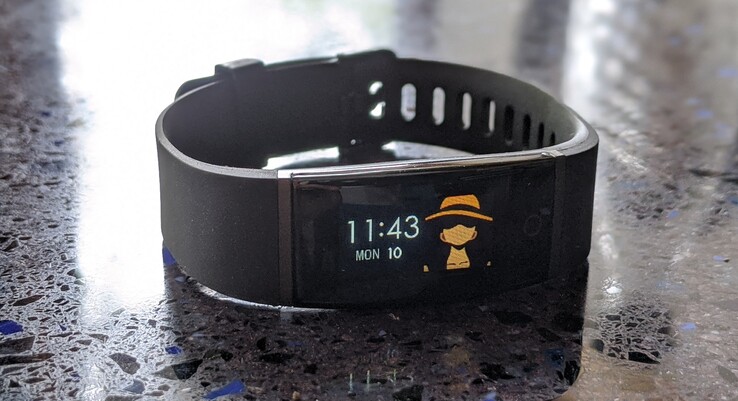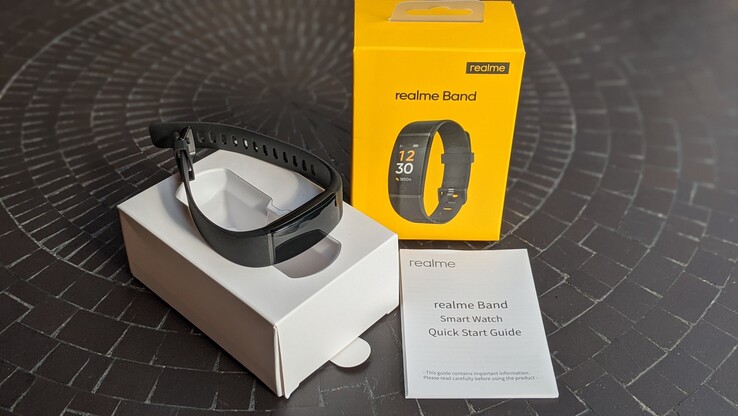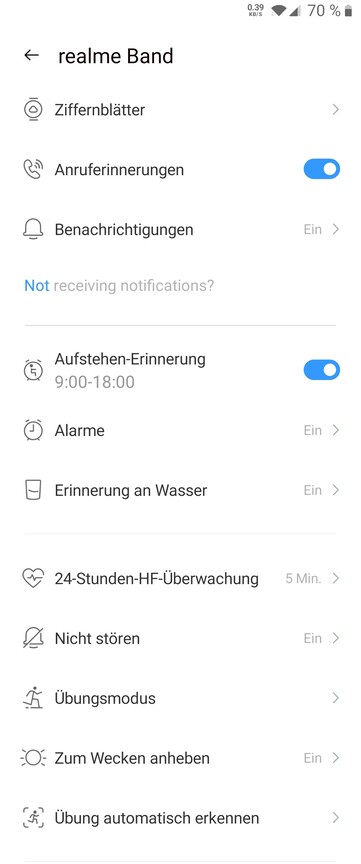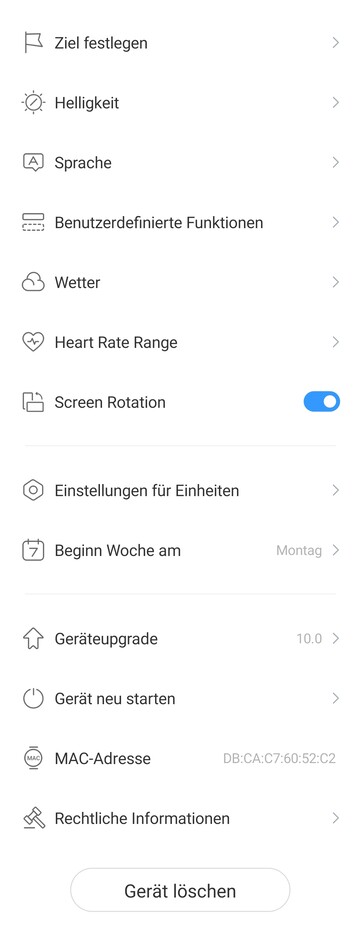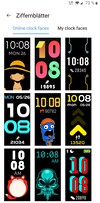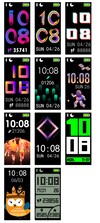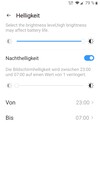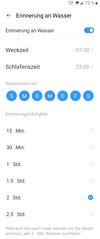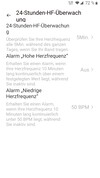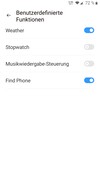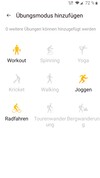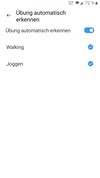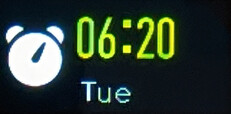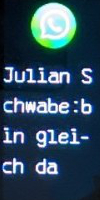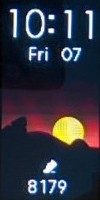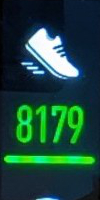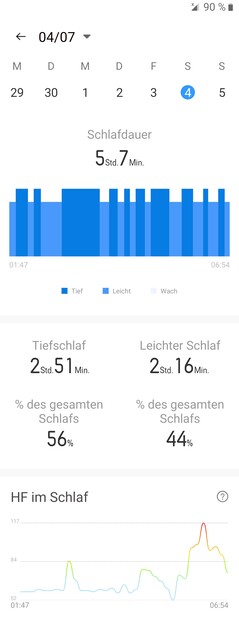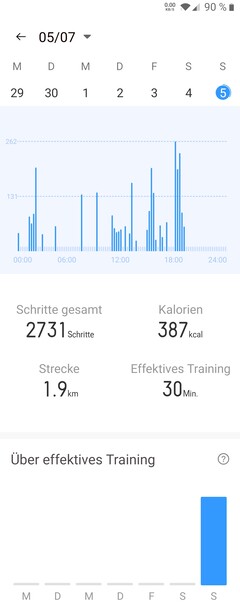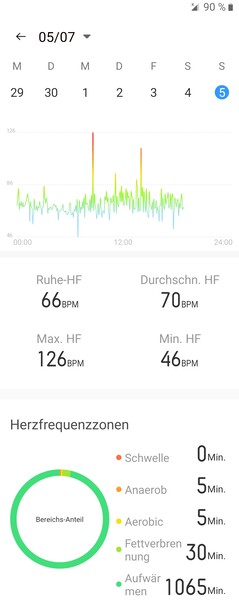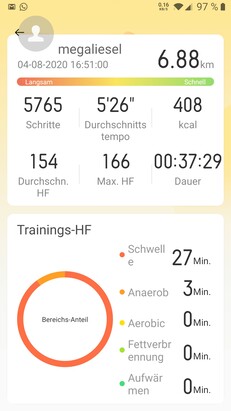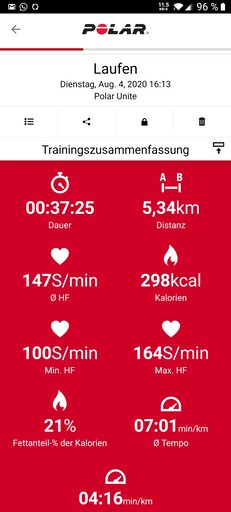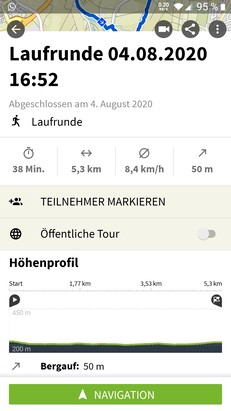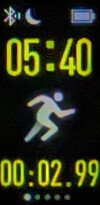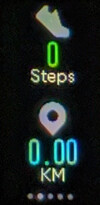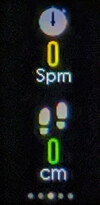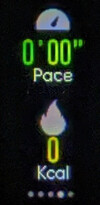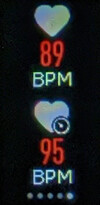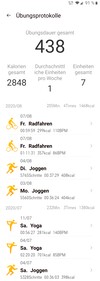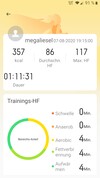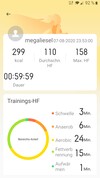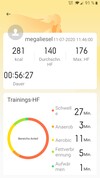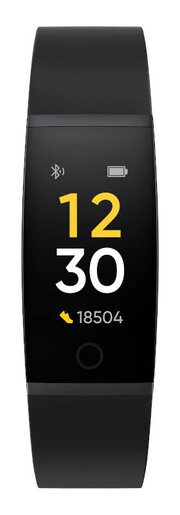realme Band review - Smart everyday companion but not suitable for sports
Connectivity – Band with simple hardware
Realme offers its first fitness tracker in three colors: black, olive green, and yellow. Two metal-colored bars located between the plastic case and strap visually enhance the simple design.
Apart from a quick-start guide and the Band itself, there's nothing else in the box; this is due to the positive fact that the USB charging port is located directly on the tracker, and, therefore, no additional adapter is necessary. But in order to remove the affected half of the strap, you first have to give the device a strong yank. The strap circumference can be adjusted between 152 and 227 mm; consequently, the fitness band fits thicker arms, but it's very long for narrow wrists and almost overlaps. The case is IP68 certified and can, therefore, withstand occasional immersion in water. However, realme doesn't mention it being suitable for swimming and doesn't offer a swimming program either.
The inexpensive tracker has an optical heart-rate sensor and a three-axis accelerometer, which ensures, among other things, that the display is activated when you lift your arm. Instead of a full touchscreen, the Band only has a touch button at the bottom edge of the display. In addition, a light sensor is missing. However, the energy consumption is overall low so that we left the brightness on the highest level in the test without any noticeable drawbacks; this brightness level wasn't blinding or unpleasant even indoors. In order to be able to read the LCD in the sun, you need to find a favorable angle and bring it closer into your field of vision, even at the brightest level.
Setup and handling – Adjustments only possible via smartphone
The initial setup requires users to download the realme Link app from realme Mobile on their smartphones, which was only available in the Play Store during the test period. In the course of the setup, you have to create an account on their servers and grant some access permissions to track your heart rate using the optical sensor, for example.
All settings are selected via the app: The Band itself has no settings menu, so you have to use your mobile phone to control the brightness, which can be adjusted in five levels, and the "Do Not Disturb" mode.
The tracker has a simple structure. There's no workout menu, and instead, realme places the various training modes between the different other views. There are nine in total to choose from, but only three of them can appear on the realme Band at a time. The same applies to additional functions, where you can pick two options between the stopwatch, Find my Phone, weather information, and a remote control for the music player on your smartphone and place them on the tracker.
An update to the proprietary operating system, which was installed towards the end of the test, adds another 15 watch faces to the five preinstalled ones; these can be downloaded from the Internet. Nice feature: The screen can be switched to landscape format using the smartphone. The setting affects all the views.
You can switch from one view to the next using the sensor button at the bottom edge of the display. A long-press starts functions such as Find my Phone or tracking a workout and takes you from the activity view to a detailed view. This works well so far. However, this form of operation is cumbersome for the music player controls: Since you can't tap the controls directly, you first have to tap the sensor button several times to activate the desired control such as "Next Track", for example, and then long-press the button again to trigger the action.
The tracker automatically displays notifications. If you make contact with the touch sensor to return to the time, they disappear and are no longer available. They keep the "unread" status on the smartphone. The realme Band notifies of incoming phone calls and a long-press on the sensor button will dismiss them if necessary.
Health and fitness – Inaccurate measurements
Realme tracks the number of steps, the distance, and the burned calories during the day; light and deep sleep phases are tracked at night, and heart rate is monitored around the clock. Those who wish to do so can be reminded regularly to drink something and to move.
The running and walking activities are recognized by the realme Band if the corresponding option is activated. For specific tracking, you can select exactly three out of a total of nine sports profiles and transfer them to the watch. You can choose between walking, running, cycling, spinning, yoga, hiking and climbing, a fitness workout, and the uncommon choice of cricket.
During stationary workouts such as spinning and yoga, the tracker shows the elapsed time, the current and average heart rate, and the calories burned as well. But the display is small, on one hand, and, on the other hand, also barely bright enough to be able to read something on it while in movement.
When running or hiking, the tracker also records the number, width, and frequency of steps as well as the distance traveled and the pace. However, the realme Band doesn't have GPS and doesn't support assisted GPS via the smartphone either; and the values determined with the help of the 3D accelerometer are far from reality. Specifically, we used the Band for three 5-km runs in the test, and it tracked well over 6 km for each run, which drastically embellished the average pace and calories burned. The average heart rate was up to about 10 beats below the measurement taken by a Polar watch at the same time. In addition, the recording of the heart rate resulted in issues with the workout log.
The following screenshots show the results of a run compared with the measurements tracked by the Komoot app and a Polar Unite watch. The latter supports A-GPS, but in this case, it also only used the 3D sensor for distance analysis, which it repeatedly succeeded in doing well in our review of the Polar Unite.
Battery life - No more workout tracking at 20% battery level
Realme specifies a runtime of approximately six days for the 90-mAh battery with permanently active heart-rate monitoring. If the permanent monitoring is deactivated, the battery should last for about nine days. Furthermore, a degree of maneuverability results thanks to the possibility of adjusting the interval for the measurement between five and 30 minutes.
The sensor was permanently active in the test, and the interval was set to the standard setting of five minutes. With two completed workout sessions of a little over 30 minutes, the battery lasted almost six days with the brightness set permanently at the highest level. If the remaining charge falls below 20%, the realme Band doesn't track workouts anymore. From our point of view, this is not comprehensible, since a one-hour workout would certainly still be easy to log considering the respectable runtime.
The Band needs about 100 minutes for a complete charge.
Verdict – Inexpensive everyday companion with weaknesses
Alarms, reminders, and other functions such as the display of notifications make the realme Band a smart companion that also provides information on movement and sleep patterns. However, the measurement of the heart rate alone raises doubts about the quality of the data.
In terms of price, the realme Band is in a segment where you can forgive weaknesses. But those who wear the Band while running and don't draw any comparisons will come to a completely wrong estimation of their performance, especially as sports enthusiasts, if the results are as inaccurate as in our test.
The realme Band comes with some useful functions. It's a shame that you can only activate and change them on your smartphone, including such important settings as the "Do Not Disturb" mode.
The fact that the tracker doesn't have a light sensor isn't really bothersome in practice because you can use it continuously at maximum brightness without any noticeable loss of battery life; the downside is, however, that the display as a whole, even at the highest brightness level, is difficult to read outdoors.
The good battery life and the fact that you don't have to carry an extra charging adapter even on longer trips, as long as you have a USB charger with you anyway, have a positive impact.
Realme has set an MSRP of 24.99 Euros (~$30) for the fitness tracker. Online prices were slightly above that during the test period and reached up to 30 Euros (~$36).




